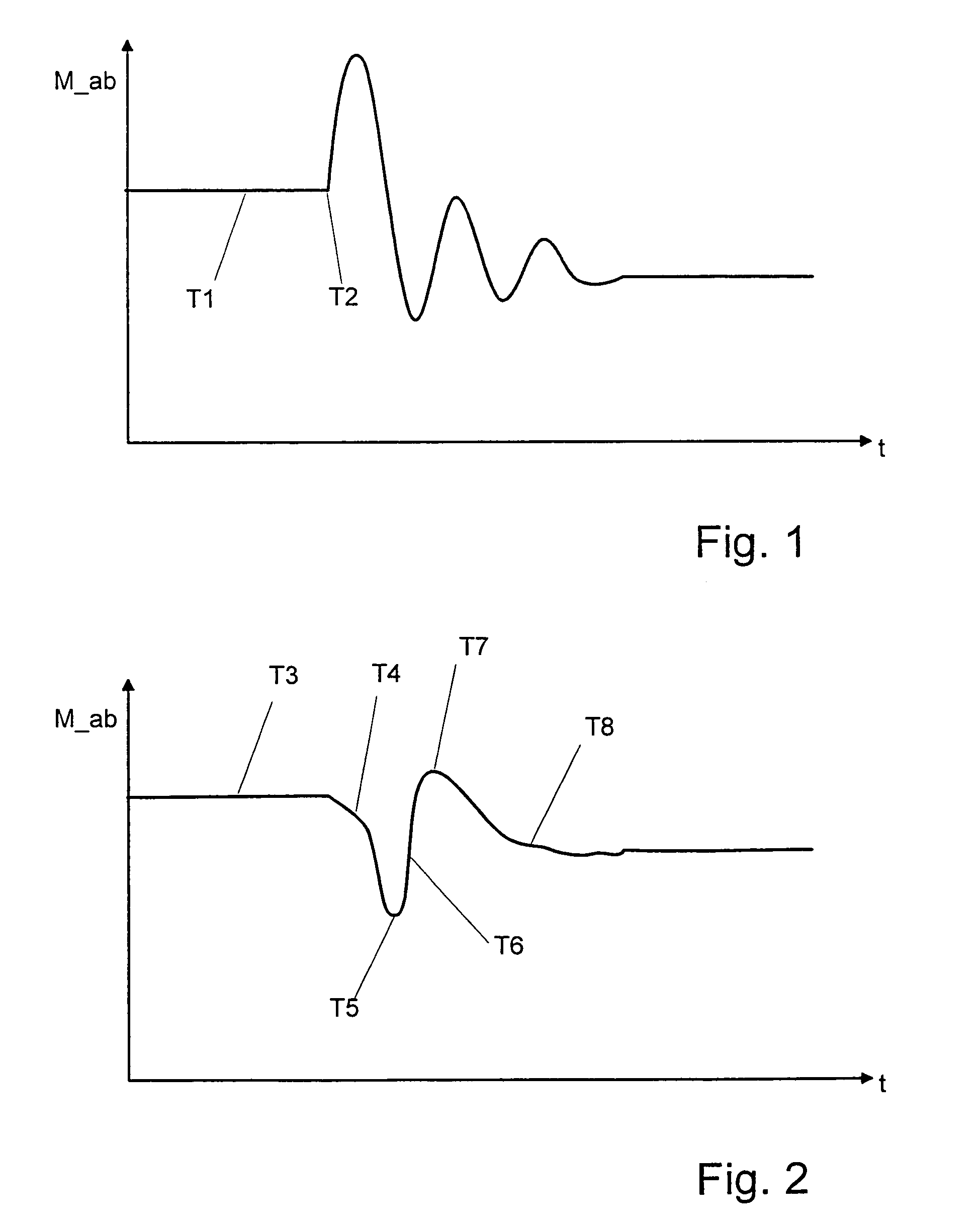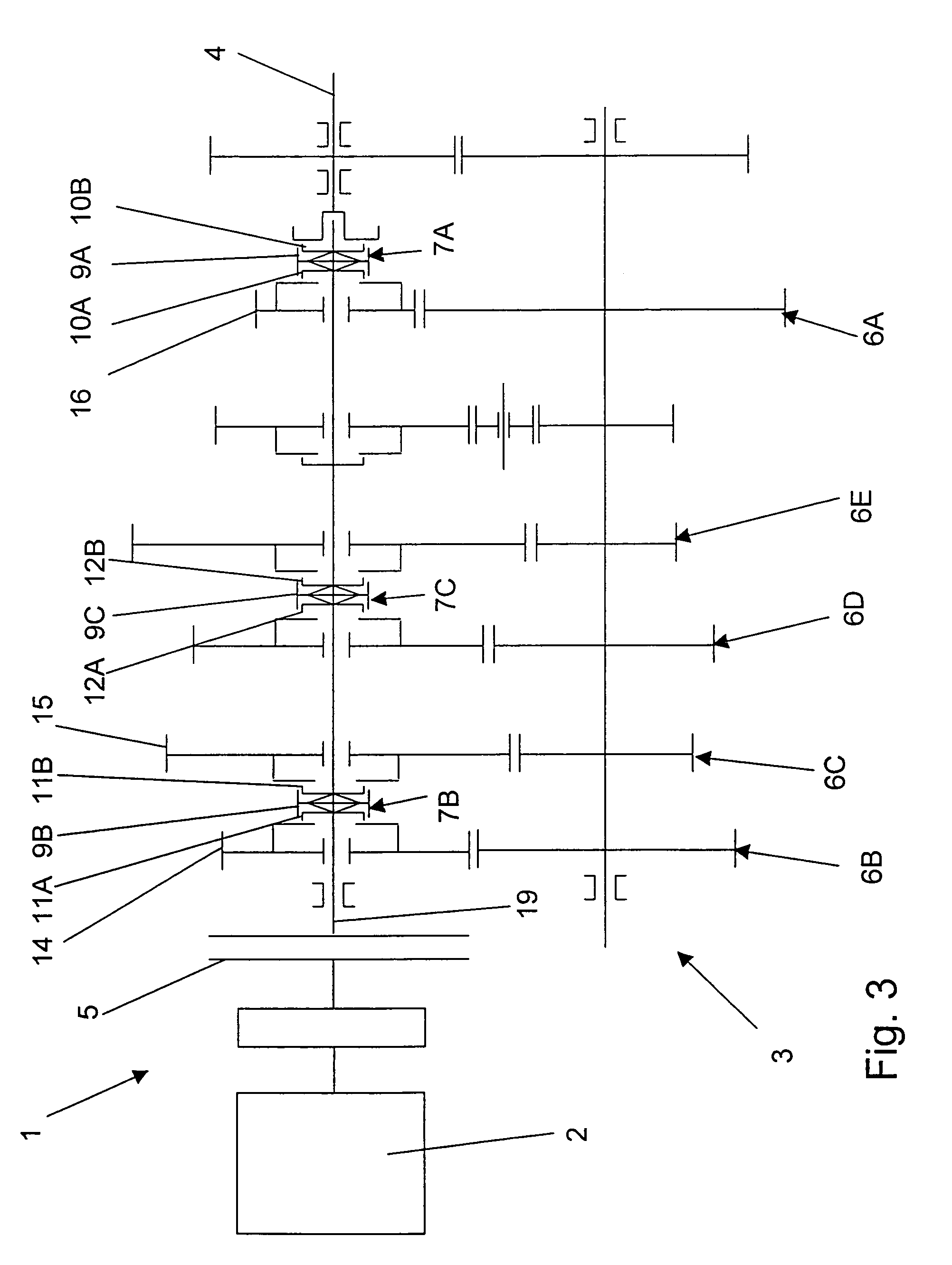Method for controlling and regulating a drive train
a technology of drive train and control train, which is applied in the direction of electric control, ignition automatic control, gearing, etc., can solve the problems of reducing input torque, affecting the operation of the drive train, so as to prevent the impact of the transmission input and output side, prevent the undesired vibration of the output train, and prevent the effect of shift operation
- Summary
- Abstract
- Description
- Claims
- Application Information
AI Technical Summary
Benefits of technology
Problems solved by technology
Method used
Image
Examples
Embodiment Construction
[0017]The mode of operation of the inventive method for control and regulation of a drive train of a vehicle is indicated with reference to the curves of an output torque M—ab during a shifting cycle of a higher traction shift shown in FIG. 1 and FIG. 2 where FIG. 2, unlike FIG. 1, reproduces the curve when the inventive method is used.
[0018]In FIG. 1 is shown the curve of a torque M—ab on an output unit of a drive train of a vehicle or of a motor vehicle during a shifting operation from an old gear to a new gear in the course of a higher traction shift such as it would shape itself when the invention method is used. The shown curve of the output torque M—ab is accomplished without a reduction of an input torque of a drive unit of the drive train. The output torque M—ab and the curve are plotted in FIG. 1 in the course of time t and have in a first range T1, in which in a transmission of the drive train an actual ratio of an old gear is adjusted, an at least approximate constant val...
PUM
 Login to View More
Login to View More Abstract
Description
Claims
Application Information
 Login to View More
Login to View More - R&D
- Intellectual Property
- Life Sciences
- Materials
- Tech Scout
- Unparalleled Data Quality
- Higher Quality Content
- 60% Fewer Hallucinations
Browse by: Latest US Patents, China's latest patents, Technical Efficacy Thesaurus, Application Domain, Technology Topic, Popular Technical Reports.
© 2025 PatSnap. All rights reserved.Legal|Privacy policy|Modern Slavery Act Transparency Statement|Sitemap|About US| Contact US: help@patsnap.com



